- Wondering how to get Monopoly GO! free rolls? Well, you’ve come to the right place. In this guide, we provide you with a bunch of tips and tricks to get some free rolls for the hit new mobile game. We’ll …
Best Roblox Horror Games to Play Right Now – Updated Weekly
By Adele Wilson
Our Best Roblox Horror Games guide features the scariest and most creative experiences to play right now on the platform!The BEST Roblox Games of The Week – Games You Need To Play!
By Sho Roberts
Our feature shares our pick for the Best Roblox Games of the week! With our feature, we guarantee you'll find something new to play!Type Soul Clan Rarity Guide – All Legendary And Common Clans Listed!
By Nathan Ball
Wondering what your odds of rolling a particular Clan are? Wonder no more, with my handy Type Soul Clan Rarity guide.
The Profound Experience of That Dragon, Cancer
Games have the capacity to evoke many emotions, but as beloved members of the “entertainment” category, they often lean toward positivity and fun. Even the scariest, bloodiest games can get your adrenaline going and get you excited, even exhilarated, for …

Games have the capacity to evoke many emotions, but as beloved members of the “entertainment” category, they often lean toward positivity and fun. Even the scariest, bloodiest games can get your adrenaline going and get you excited, even exhilarated, for the action in which you participate. However, it is rare, and certainly a first in my experience, where a game could elicit true sorrow, pain, distress, and empathy. That Dragon, Cancer brought out in me such emotion that I doubt I will ever forget the experience.
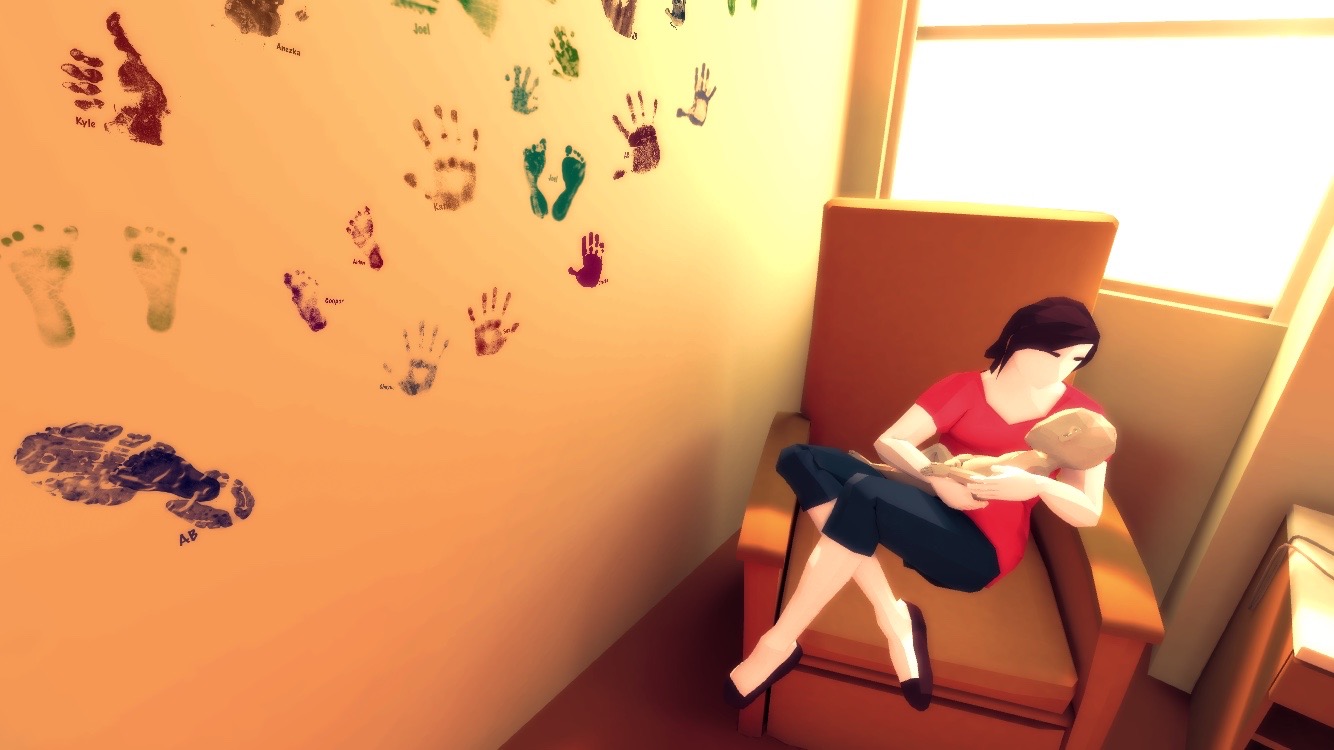
The game takes approximately two hours— or longer, depending on how much time you spend interacting with the extensive ephemera— and offers a powerful interactive narrative for players. Creators Ryan and Amy Green share with their audience both concrete and abstracted scenarios through which they, and we, experience the progressive cancer which ultimately takes the life of their young son Joel. It is an artful response to a profound human pain.
The art style is surreal, muted, and uses low poly forms for characters. The geometries of baby Joel, for example, were alienating at first but proved to be a graceful reprieve from the rawness of the story, the laughter, the crying. Without illustrations, cartoons, or hyperreal renderings, the abstraction made the characters mutable, and therefore, relatable for a player to see themselves within a scenario.
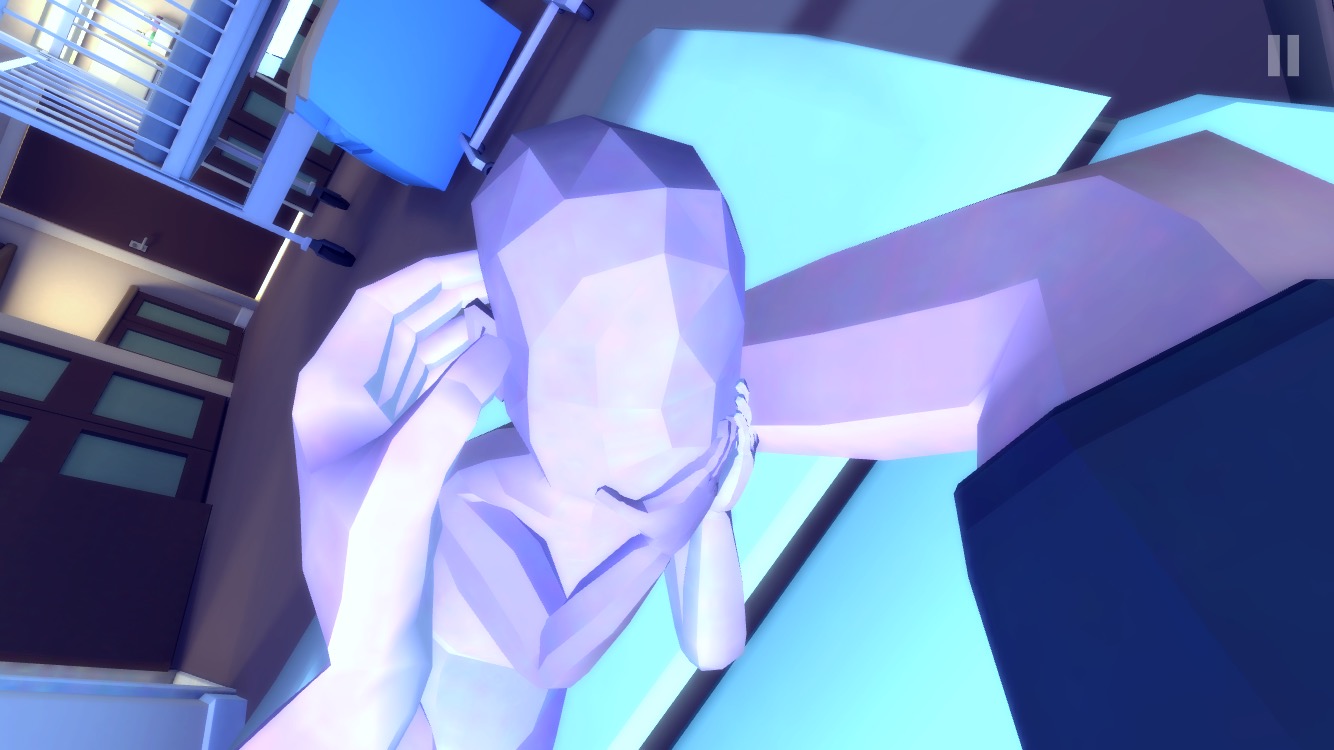
The primary mode of advancing through the linear narrative is to explore and take action whenever you see prompts. New areas are opened up after completing certain mini-games or tasks. Scenes include more whimsical activities such as playing with Joel on a playground, navigating a precarious bouquet of balloons through jagged tumor-like asteroids (or asteroid-like tumors), and hatching carousel animals from constellations for Joel to ride on. More self-conscious meta levels include racing a go-kart through a hospital and progressing through a side-scrolling platfomer as a beknighted boy battling scorpions and ultimately a dragon.
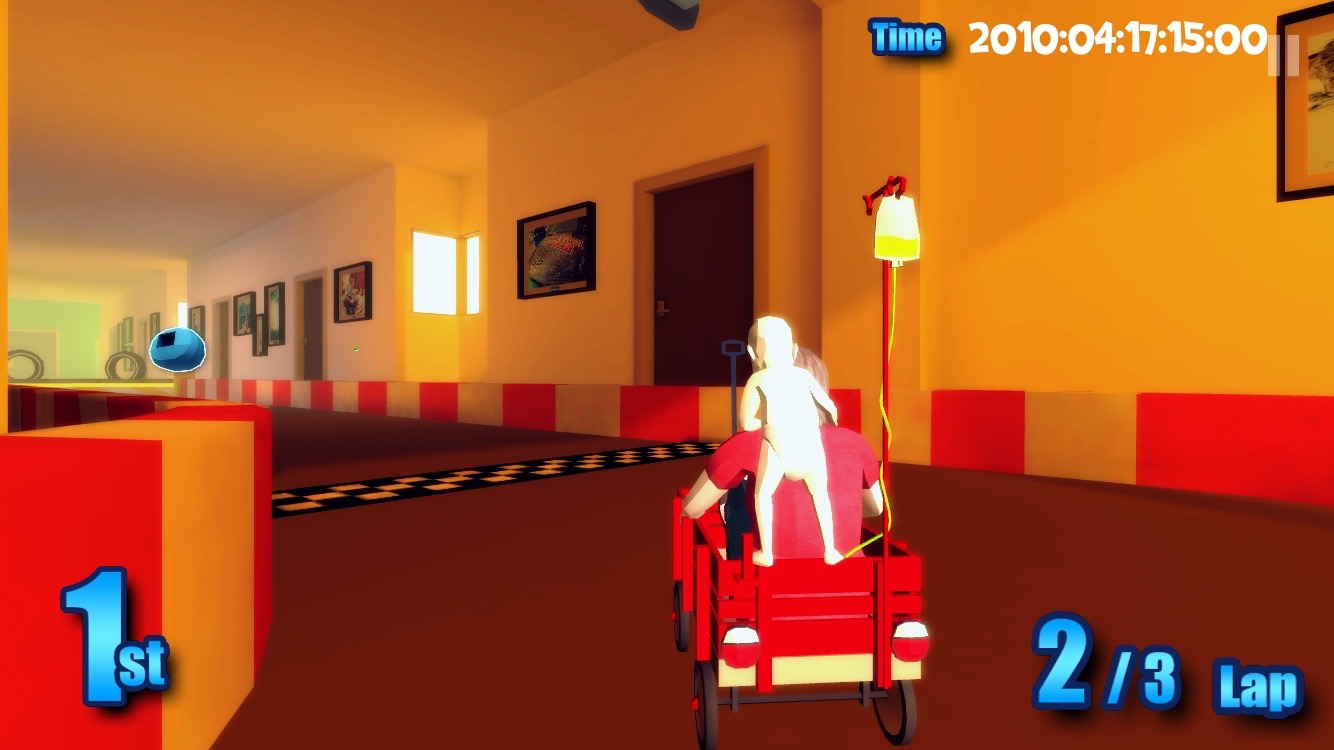
Some of the scenes are difficult to maneuver, difficult to understand or to know what’s expected of you. The controls aren’t always smooth and frustration at the mechanics does surface from time to time. While I would normally say that game design should always be virtuous for the player, never hindering a gameplaying experience, that claim doesn’t serve this experience. The feeling that I was sometimes playing a slightly broken game—leaving me feeling lost, helpless and wanting to give up—served the experience even more. For indeed, aren’t we all playing a broken game in some area of our lives?
Some of the most poignant scenes for me are still echoing in my head. Trying to calm a sobbing baby who is dehydrated and wanting something to drink, but will only vomit up anything offered. The rising waters of a rain-drenched waiting room where a doctor is delivering horrible news. Stepping out into a hospital hallway, surrounded by cards people have written to their departed loved ones. Popping bubbles with a joyful giggling child, no longer in pain.
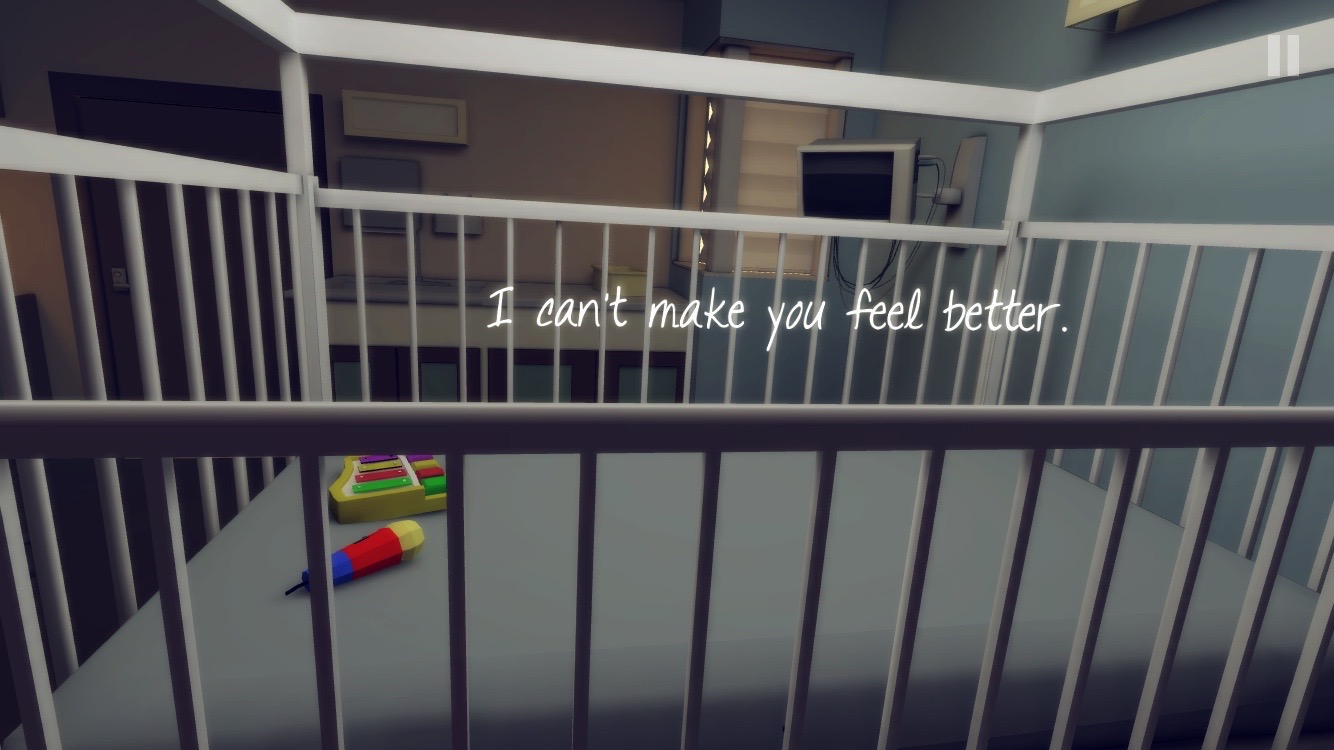
It’s impossible to hold this game to the criteria we use for a traditional video game, because it is an experience that simply cannot compare. At first, I might suggest that That Dragon, Cancer is not game for everyone because of its difficult content, or even because of its pacing or abstractions. But I can’t stand behind that statement.
Each scene is like a movement in a musical composition, a monologue on a stage, a dreamscape painted on a canvas. Artmaking is a reaction to an artist’s unique reality and so is the audience’s experience of that art. Just as I would never make a judgment about who should see a play or hear a symphony, I can’t limit the audience for this game to people who like gamebooks, or mini-games, or some other proscriptive genre.
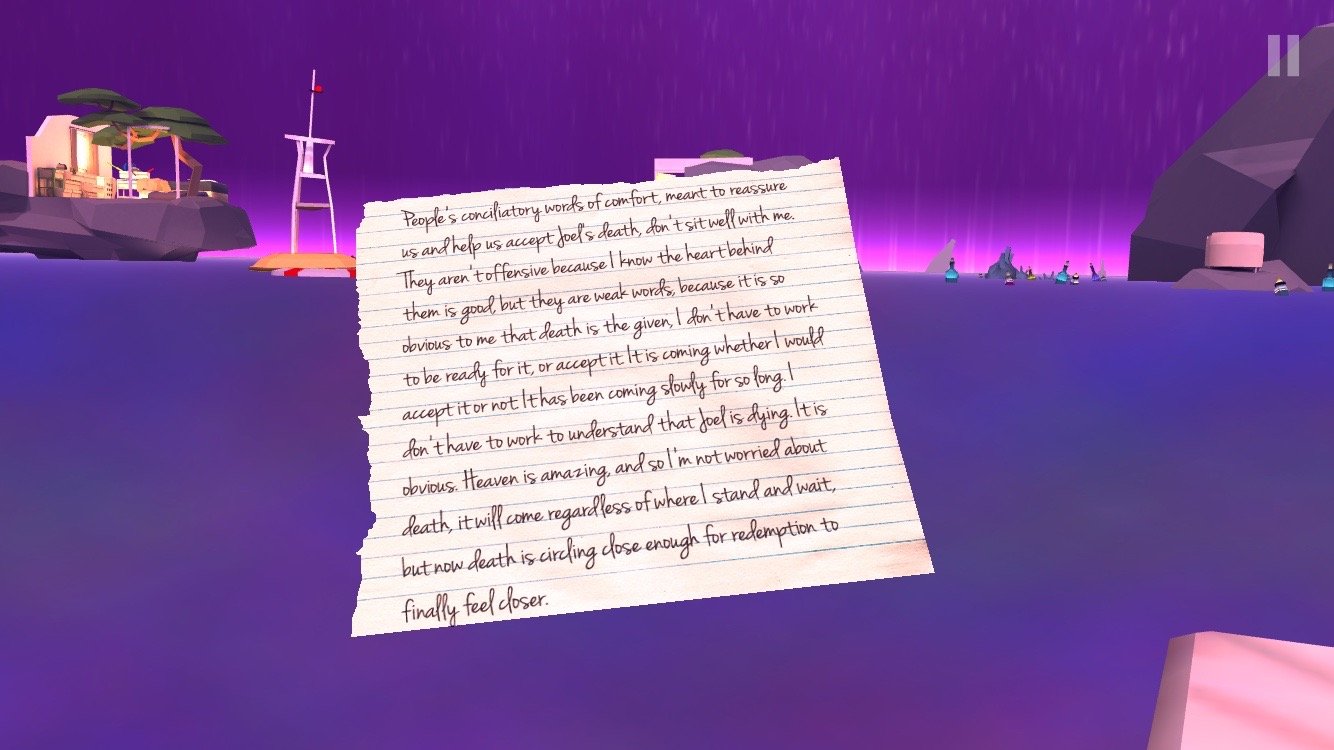
That Dragon, Cancer is for anyone who has experienced or is experiencing the loss of a loved one. It’s for anyone who has faced their own mortality, who is struggling to understand their relationship to fate or faith, who is seeking understanding and empathy themselves, who is suffering within their own broken game of life.
In its tragic beauty, That Dragon, Cancer accomplished the very best of what a game or any piece of art can do: renew one’s gratitude for the blessings of life.
More articles...
Monopoly GO! Free Rolls – Links For Free Dice
By Glen Fox
Wondering how to get Monopoly GO! free rolls? Well, you’ve come to the right place. In this guide, we provide you with a bunch of tips and tricks to get some free rolls for the hit new mobile game. We’ll …Best Roblox Horror Games to Play Right Now – Updated Weekly
By Adele Wilson
Our Best Roblox Horror Games guide features the scariest and most creative experiences to play right now on the platform!The BEST Roblox Games of The Week – Games You Need To Play!
By Sho Roberts
Our feature shares our pick for the Best Roblox Games of the week! With our feature, we guarantee you'll find something new to play!Type Soul Clan Rarity Guide – All Legendary And Common Clans Listed!
By Nathan Ball
Wondering what your odds of rolling a particular Clan are? Wonder no more, with my handy Type Soul Clan Rarity guide.







